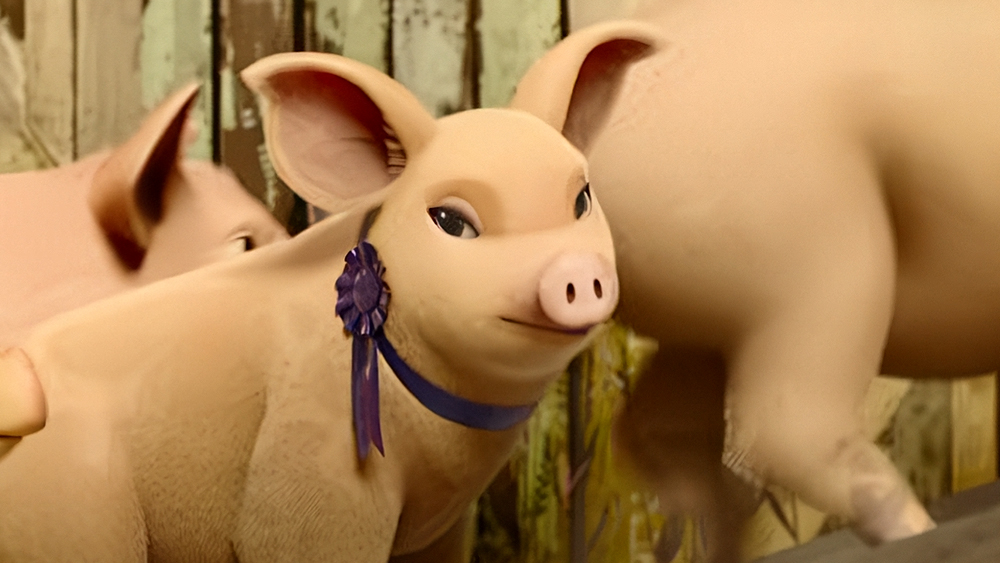How to illustrate a Star Wars-inspired environment
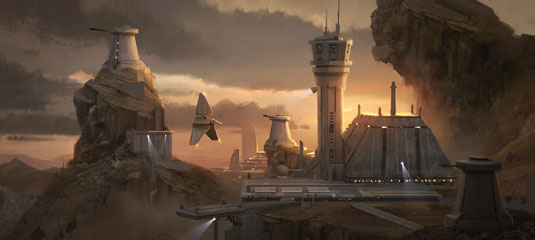
When working out how to draw a new piece, preparation is key. An important thing I always consider when starting a new illustration is the overall composition. It helps to make up your mind about where the big shapes in your image will go.
Adding building structures and an Imperial shuttle to a mountain ridge can significantly change your composition, so be aware of the traps you can get caught in, and keep a close eye on how the image changes when you start introducing new shapes to your artwork.
It can save you time if you work with a 3D program such as Blender or Modo, in which you can create a backdrop of your mountain ridge and then quickly block out the big shapes of your structures in front of it.
That way you can create 3D art with maximum control over the scale and placement of each individual part. Furthermore, it becomes quick and easy to duplicate and move parts around to build up your image. I see it like a big puzzle, and when everything falls into place I sort of feel it 'click'.
Afterwards, I drag my renders into Photoshop, ready for painting. If you've set up your camera in your 3D software correctly, then the structures should fit into your mountain ridge perfectly.
01. Map it out
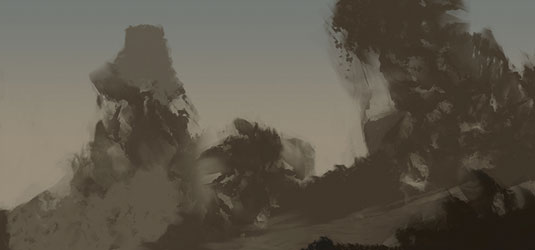
When starting a new painting, make an effort to focus on the big shapes and how they relate to each other. When shapes recede into the distance they become lighter, so try to place layers of shapes on top of each other to give your scene a sense of distance.
02. Block out in 3D
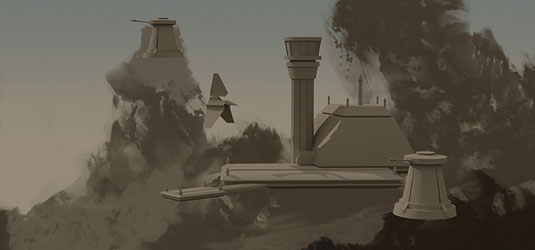
Once I'm satisfied with the composition I start blocking out the structures in 3D. After that I drag and drop them into Photoshop, and try to separate the buildings according to the layer of rock they're place upon. This makes it easier to add details to them later on.
Daily design news, reviews, how-tos and more, as picked by the editors.
03. Focus on light and colour
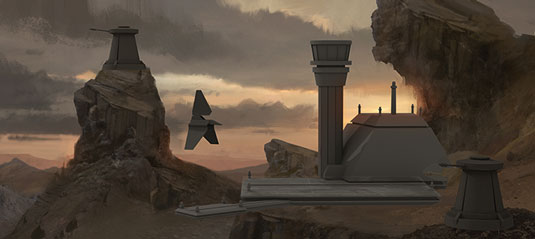
Finally, I focus on the lighting and colour scheme, and start to detail everything. By using a large Soft brush on an Overlay layer you can quickly bathe an image in light and make a certain area feel especially warm or cold. All that's left now is to add little lights and we're done!
This article originally appeared in ImagineFX, the world's best-selling magazine for digital artists. Subscribe here.
Like this? Read these...
